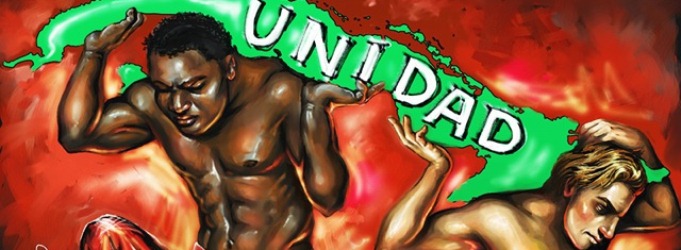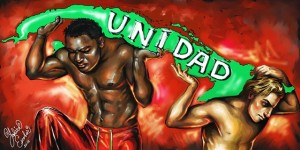
Racism
MIAMI – In waters off Virginia Key, some 6 kilometers southeast of downtown Miami, American blacks and mulattos used to bathe until the early 1960s. It wasn’t by choice. In fact, the dangerous currents of Biscayne Bay not only swept and eroded the “colored people’s beach” but also threatened the life of every bather. Some people thought that the blacks got the worst deal, because the law forbade them to swim in the beautiful nearby beaches. Those were days of total segregation and institutionalized racism.
Today, racism has been overcome by legal means but still remains in the deepest of the countervalues of U.S. culture. If anybody doubts that, let me point to the twisted trial that freed the murderer of an innocent black youth who went walking on a rainy night with candy in his pockets. To the Anglos, race mixing always was a Latino thing and they always classified mulattos as black, no matter how white they looked. From that bad habit emerged the word “Afro-American,” which, instead of helping racial integration, alienated blacks even more, reminding them of their African origin.
 The national unity of Cubans requires an effort, especially in the presence of powerful forces that try to divide us in every way. The racial issue is, to me, the most dangerous. The United States continues to be shaken by hatred and racial segregation. In Cuba, segregation was not as severe, because the Spanish colonialists did mate with natives and blacks, leaving a mixed descent that was not segregated as severely as in the Anglo-Saxon world.
The national unity of Cubans requires an effort, especially in the presence of powerful forces that try to divide us in every way. The racial issue is, to me, the most dangerous. The United States continues to be shaken by hatred and racial segregation. In Cuba, segregation was not as severe, because the Spanish colonialists did mate with natives and blacks, leaving a mixed descent that was not segregated as severely as in the Anglo-Saxon world.
Of course there was racism, and racism exists even now, despite all the efforts made by the Revolution to eliminate it from the Cuban culture. It is not an institutionalized racism or an oversight by the government’s political will, which tries hard to eliminate it altogether. I am therefore surprised that a piddling group of Cubans are taking money from the U.S. Agency for International Development to lie brazenly about that sensitive issue, an issue that must not be ignored, much less exploited.
At the start of Cuba’s pseudo-republic, there was a war between blacks and whites on the island, fueled under the table by U.S. interests groups that knew that by dividing us through a civil war they could justify U.S. intervention. Because the topic of race is highly subversive, they re-enacted the history of racial separatism with propaganda that insisted in using the word “Afro-Cuban,” when in reality all of us from Cuba are Cubans. It is not necessary to place so much emphasis on our ancestral differences, because that harms the unity that is so necessary to the Cuban nation.
Now, political groups based on skin color are appearing in Cuba. Can you imagine?
It happens that a fellow named Manuel Cuesta Morúa, who appears to be a leader of those who desire to exploit the color of their skin for political gains, is portraying his little group as leftist and progressive even as he visits the studios of Radio and TV Martí asking for money for his activities. We know that the “Afro-Cuban Alliance” (ACA) is bankrolled by the USAID, but what’s most remarkable about its political agenda is its pretense to be socialist, and its affinity with the PSOE [Socialist Workers Party of Spain] and all of Spain’s bourgeois socialism. Could it be trying to dismantle the Cuban state through phony socialism?
Racism is rampant in Miami, but any black Cuban who comes from the island saying things that please the ears of the racist ultra-right will be welcome for a short period of time, enough to maybe make a few dollars (not many), so there is no shortage of scoundrels who exploit that situation. I remember that, as I sipped coffee at the Versailles Restaurant on Calle Ocho one day, a white blue-eyed man who had told me how much he had enjoyed the night life in pre-Revolutionary Havana, made this comment upon seeing a black customer entering the restaurant:
“Do you see that little Negro? Now, that’s a decent Negro. He always comes in wearing a suit and tie.”
Imagine my surprise as I looked around and saw myself surrounded by whites informally dressed in walking shorts and flip-flops. Could it be that, for that black Cuban, the dress code was not the same as the whites’?
In the United States, we don’t have a black president. We have a mulatto raised as a white. Although he is not from the Right, I don’t think he’ll dare to dismantle by presidential decree the cultural traditions that feed racism, because they’re part of an old, ingrained system. I believe that the Cuban blacks, mulattos or mestizos who desire a better Cuba, without racism or exclusion, should not look so much toward the north in search of inspiration, because that question must be resolved in the heart of Cubanness. Martí phrased it best when he said: “A Cuban is more than white, more than mulatto, more than black.”


